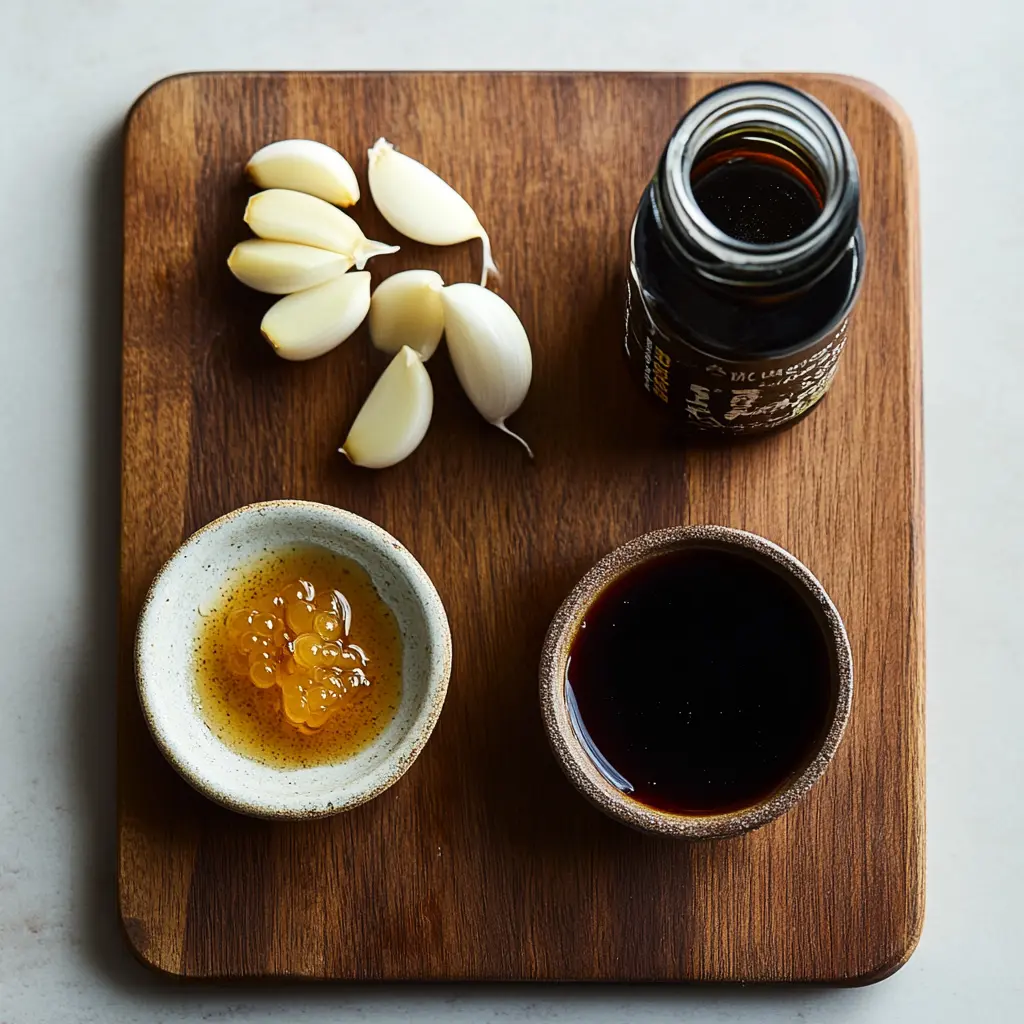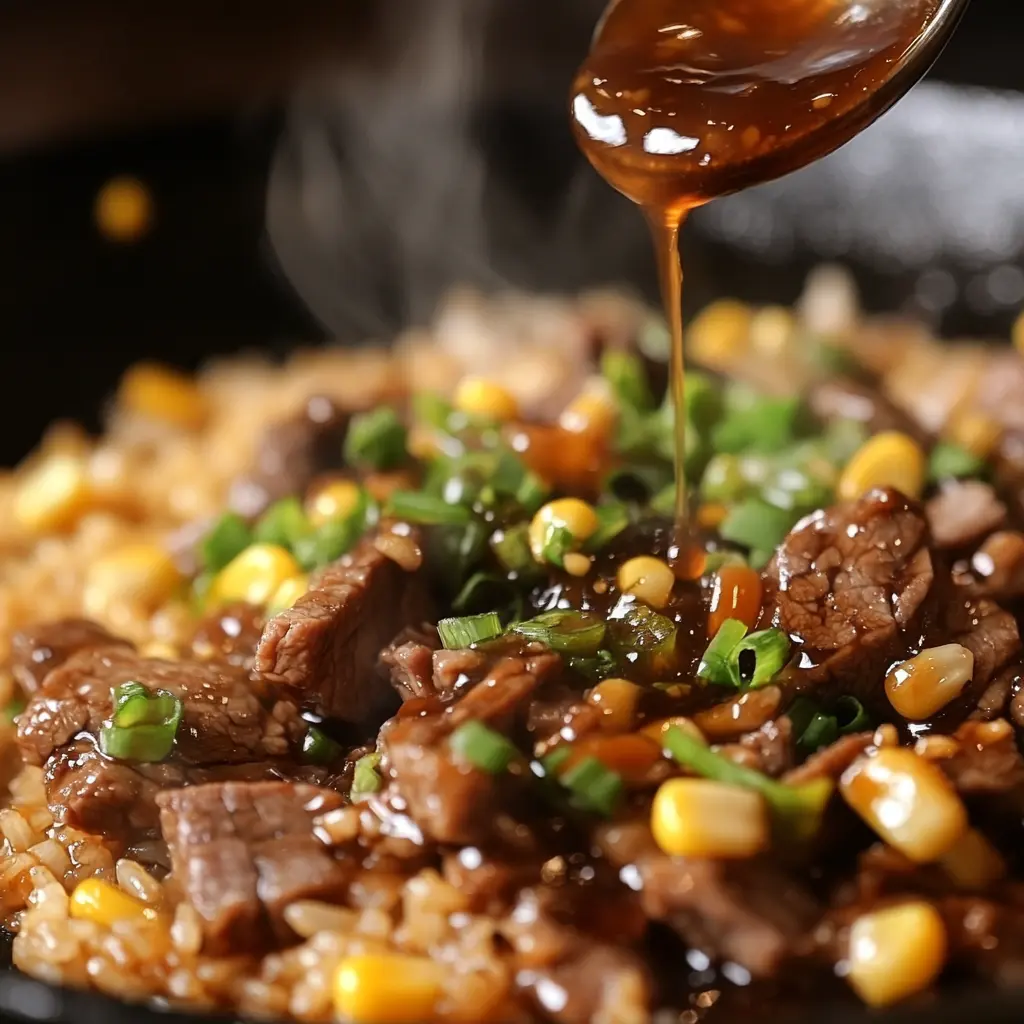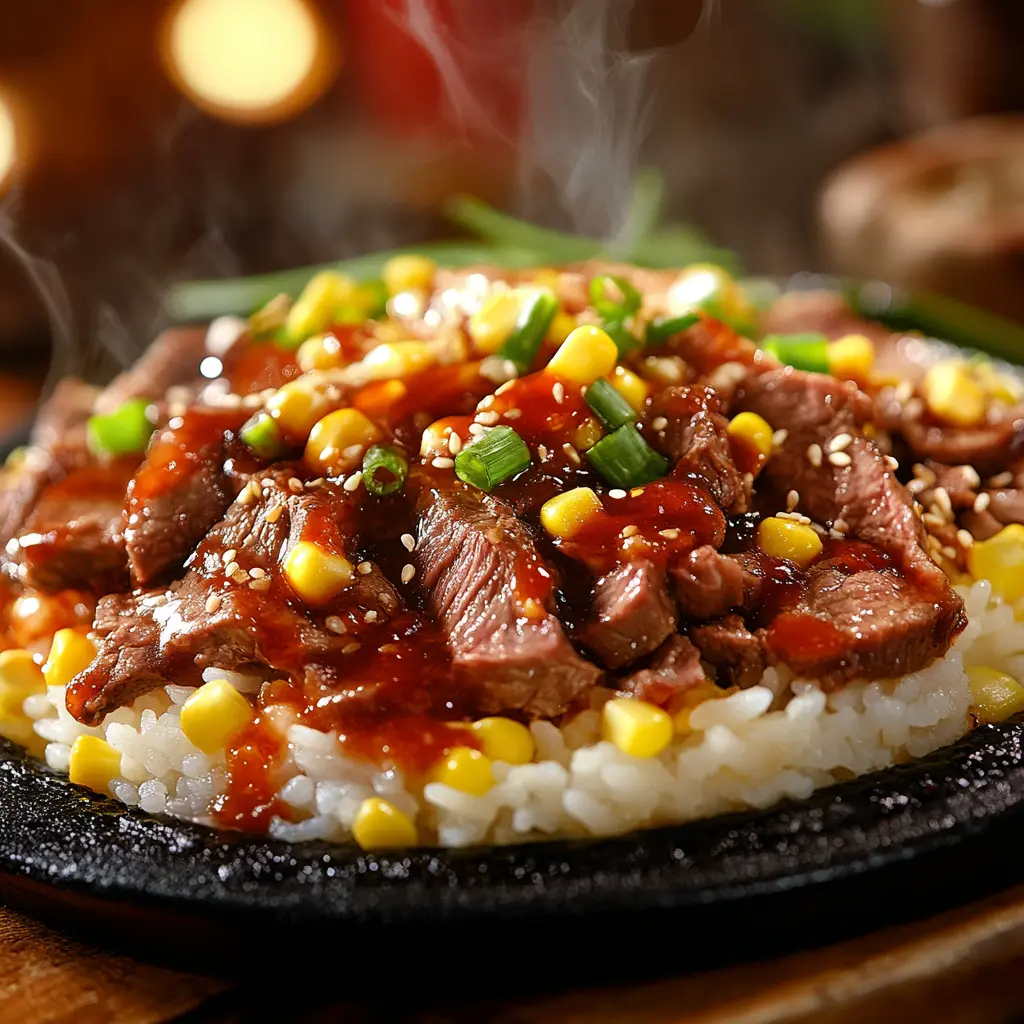Pepper Lunch is a unique dining experience where you get to be the chef of your meal, sizzling your favorite ingredients right at your table. At the heart of this interactive feast is their signature sweet sauce, known as Amakuchi. It’s a delightful combination of sweet, savory, and umami flavors that transforms every dish into a culinary masterpiece. This article dives deep into the secrets of the sweet sauce, its ingredients, uses, and how it enhances your meals.
Part 1: Introduction to Pepper Lunch’s Sweet Sauce
Overview of Pepper Lunch’s Culinary Concept
When you step into Pepper Lunch, you’re greeted with a dining experience like no other. The brand revolutionizes how meals are served, offering sizzling hot plates to cook your food to your liking. This interactive approach not only makes dining fun but also ensures every bite is fresh, hot, and tailored to your preferences.
Sauces play a critical role in this setup, acting as the bridge between the sizzling ingredients and your taste buds. Each sauce is crafted to balance and enhance the flavors of tender meats, fresh vegetables, and perfectly cooked rice.
Significance of Sauces in Enhancing Flavor
Sauces, especially at Pepper Lunch, aren’t just condiments—they’re the stars of the show. Their purpose is more than simply adding flavor; they tie together all the elements on your plate. Whether it’s the savory kick of soy sauce or the gentle sweetness of honey, sauces elevate the dining experience.
And yet, among the sauces offered, the sweet sauce holds a special place. Customers rave about how it adds depth to their dishes without overwhelming the natural flavors of the ingredients. It’s the perfect complement to sizzling beef, chicken, or even vegetables.
Introduction to the Sweet Sauce (Amakuchi)
Known as Amakuchi, the sweet sauce at Pepper Lunch is a staple for fans of bold yet balanced flavors. Translating to “sweet taste” in Japanese, Amakuchi is as comforting as it is versatile. The sauce is crafted from high-quality soy, a touch of honey, and garlic, giving it a rich and harmonious profile. Whether you’re drizzling it over rice or dipping tender meat into it, Amakuchi promises a burst of flavor in every bite.
What sets it apart is its adaptability—it pairs beautifully with a range of ingredients, from sizzling beef to steamed vegetables. Once you’ve had a taste of this sauce, it’s hard to imagine your meal without it.
Part 2: Composition and Preparation of Amakuchi Sauce
Key Ingredients of Amakuchi Sauce
The magic of Pepper Lunch’s sweet sauce, or Amakuchi, lies in its carefully selected ingredients. Each component plays a vital role in creating a balance of sweetness, umami, and depth. Let’s break down the stars of the recipe:
- Soy Sauce: This is the backbone of Amakuchi. Its salty, umami-packed base sets the stage for the other flavors to shine. Pepper Lunch uses high-quality soy sauce to ensure a robust yet smooth foundation.
- Honey: Adding a natural sweetness, honey rounds out the sauce and gives it its distinct mellow taste. It’s the perfect counterpart to the saltiness of soy sauce.
- Garlic: Minced garlic adds aromatic depth and just a hint of pungency. It brings the sauce alive without overpowering the delicate balance.
- Mirin: A subtle, sweet rice-based ingredient, mirin enhances the sauce’s body and complexity. Though alternatives like a touch of sugar can be used, mirin is the traditional choice for authenticity.
These simple yet powerful ingredients work in harmony to create a sauce that’s sweet, savory, and irresistible. But what makes this sauce even more special is its ability to adapt to a variety of dishes, making every meal feel indulgent.

Step-by-Step Preparation Guide
Making Amakuchi sauce at home is surprisingly easy and allows you to enjoy the Pepper Lunch experience whenever the craving strikes. With just a few ingredients and a little time, you can whip up a batch that’s perfect for drizzling, dipping, or even marinating. Here’s how you do it:
- Sauté Aromatics: Begin by heating a tablespoon of neutral oil in a small saucepan over medium heat. Add finely minced garlic and sauté for about a minute until fragrant, but be careful not to burn it—burnt garlic can turn bitter.
- Combine Ingredients: Lower the heat slightly and stir in ½ cup of soy sauce, 3 tablespoons of honey, and 2 tablespoons of mirin. Mix well until the ingredients are fully incorporated.
- Simmer the Sauce: Allow the mixture to come to a gentle simmer. Stir occasionally to prevent sticking or burning. This simmering process helps meld the flavors together beautifully.
- Thicken (Optional): If you prefer a thicker consistency, dissolve 1 teaspoon of cornstarch in 2 teaspoons of water to make a slurry. Slowly add it to the simmering sauce, stirring continuously to avoid lumps. Let it cook for another 2–3 minutes until it thickens slightly.
- Cool and Store: Remove the saucepan from heat and let the sauce cool to room temperature. Transfer it to a clean, airtight container, and store it in the refrigerator for up to two weeks.
Variations and Customizations
Amakuchi sauce is incredibly versatile, and you can tweak it to suit your taste preferences:
- Spicy Twist: Add a pinch of chili flakes or a dash of Sriracha for a hint of heat.
- Zesty Citrus: Incorporate a teaspoon of fresh lemon juice or grated orange zest to brighten up the flavor.
- Herbal Notes: Infuse the sauce with fresh herbs like thyme or parsley during the simmering stage for added complexity.
Experimenting with these variations can make your homemade Amakuchi sauce uniquely yours while staying true to its Pepper Lunch inspiration.
Part 3: Application of Amakuchi Sauce in Dishes
Enhancing Beef Pepper Rice
If there’s one dish that truly showcases the versatility of Amakuchi sauce, it’s Pepper Lunch’s iconic Beef Pepper Rice. This sizzling sensation combines thinly sliced beef, sweet corn, steamed rice, and fresh scallions. All these components come together on a hot iron plate, creating a feast for the senses.

But the magic doesn’t truly happen until you drizzle the sweet sauce over the dish. The moment it hits the hot plate, the sauce sizzles and caramelizes slightly, creating a mouthwatering aroma. As you stir everything together, the sauce coats each grain of rice and slice of beef, infusing the dish with its sweet-savory charm.
What makes Amakuchi sauce so special in this dish is its ability to balance the flavors. The sweetness from the honey complements the savory beef, while the umami from the soy sauce enhances the richness of the rice. Add a dash of black pepper, and you’ve got a perfect harmony of flavors and textures.
If you’re recreating Beef Pepper Rice at home, don’t skimp on the Amakuchi sauce. It’s the finishing touch that takes this humble dish to the next level.
Pairing with Chicken and Seafood
While Beef Pepper Rice might be the flagship dish at Pepper Lunch, Amakuchi sauce isn’t limited to beef. Its sweet and umami-rich profile makes it an ideal companion for chicken and seafood dishes. Whether you’re grilling, frying, or baking, this sauce adds a burst of flavor that elevates even the simplest recipes.
For chicken, the sauce works beautifully as a glaze. Brush it onto chicken thighs or wings during the final minutes of grilling or roasting, allowing it to caramelize and create a slightly sticky coating. The sweetness balances the savory meat, while the garlic adds a subtle depth.
When it comes to seafood, Amakuchi sauce shines as a marinade or drizzle. Imagine fresh salmon fillets brushed with the sauce and baked until flaky, or shrimp stir-fried with garlic, vegetables, and a splash of Amakuchi. The sauce’s delicate sweetness complements the natural brininess of seafood, making each bite irresistible.
Even more exciting, you can pair it with fried calamari or tempura for a dipping sauce that’s out of this world. Its versatility truly knows no bounds!
Vegetarian and Vegan Options
It’s not just for meat lovers—Amakuchi sauce is equally fantastic with plant-based dishes. Whether you’re vegetarian, vegan, or simply looking to include more plant-based meals in your diet, this sauce will bring your dishes to life.
One of the simplest ways to use Amakuchi sauce in vegetarian cooking is by drizzling it over stir-fried vegetables. Picture a colorful medley of broccoli, bell peppers, mushrooms, and snap peas, lightly sautéed and finished with a generous splash of sweet sauce. It turns a basic vegetable dish into a gourmet delight.
For vegans, tofu is an excellent canvas for showcasing the sauce. Press and pan-fry firm tofu until golden and crispy, then coat it with Amakuchi sauce. The tofu absorbs the flavors, resulting in a dish that’s rich, satisfying, and packed with protein.
Another great option is to use the sauce as a dressing for a grain bowl. Combine quinoa, roasted sweet potatoes, spinach, and avocado, and drizzle it with Amakuchi. The sauce ties all the elements together, adding a vibrant burst of flavor to an otherwise simple meal.
Creative Uses Beyond Traditional Dishes
While Amakuchi sauce is perfect for Pepper Lunch-inspired meals, its applications go far beyond. Here are a few creative ways to incorporate it into your everyday cooking:
- Noodles and Stir-Fries: Toss it with rice noodles or lo mein for a quick and flavorful dinner.
- Sandwich Spread: Mix a spoonful of Amakuchi sauce with vegan mayo or Greek yogurt for a tangy, sweet sandwich spread.
- Salad Dressing: Thin it with a little rice vinegar and sesame oil to create a unique and tasty dressing for leafy greens or cold noodle salads.
- Rice Bowls: Drizzle over a simple bowl of steamed rice with an egg on top for a quick and delicious comfort meal.
In each of these dishes, the sauce acts as a flavor enhancer, transforming basic ingredients into something truly special. Whether you’re preparing a traditional Pepper Lunch dish or exploring new culinary horizons, Amakuchi sauce is your secret weapon for making meals unforgettable.
Part 4: Nutritional Aspects and Storage
Nutritional Profile of Amakuchi Sauce
While Amakuchi sauce is beloved for its rich and flavorful profile, it’s worth taking a closer look at its nutritional composition. Knowing what goes into the sauce can help you enjoy it as part of a balanced diet. Here’s what you can expect in a typical serving (about 1 tablespoon):
- Calories: Around 50 kcal
- Carbohydrates: 6–8 grams (primarily from honey and mirin)
- Protein: Minimal, usually less than 1 gram
- Fat: Negligible, as the sauce is primarily liquid-based
- Sodium: Approximately 300–500 mg, depending on the soy sauce used
The key ingredient contributing to its caloric value is honey, which also provides natural sweetness. On the other hand, soy sauce is the main source of sodium, so individuals on a low-sodium diet should use it sparingly.
Despite its slightly high sodium content, the sauce contains no trans fats or cholesterol. Plus, its ingredients like garlic and honey offer modest health benefits, including antibacterial properties and antioxidants.
Storage Guidelines for Amakuchi Sauce
To ensure that your homemade Amakuchi sauce stays fresh and retains its delectable flavor, proper storage is crucial. Here are some tips to keep it in optimal condition:
- Refrigeration: Once prepared, transfer the cooled sauce to an airtight glass container or bottle. Store it in the refrigerator, where it can remain fresh for up to two weeks. Glass containers are preferred because they don’t absorb the strong flavors or odors of the sauce.
- Freezing for Longevity: If you’ve made a large batch, consider freezing portions for future use. Pour the sauce into ice cube trays and freeze them. Once frozen, transfer the cubes to a resealable freezer bag. These can be thawed as needed and will last up to three months.
- Avoid Cross-Contamination: When using the sauce, always pour out the desired amount rather than dipping utensils directly into the container. This prevents contamination and extends the shelf life of the sauce.
- Reheating and Adjusting: If the sauce thickens after refrigeration, gently warm it on the stovetop or in the microwave, adding a splash of water or mirin to restore its consistency.
By following these simple storage techniques, you can ensure that your homemade Amakuchi sauce remains as fresh and flavorful as the day it was made.
Health Considerations
While Amakuchi sauce is a flavorful addition to meals, moderation is key. Its sodium content, primarily from soy sauce, can add up quickly if consumed in large amounts. For those with dietary restrictions, consider using a low-sodium soy sauce or reducing the amount of soy sauce in the recipe.
Similarly, the sweetness of the sauce comes from honey and mirin, which contribute natural sugars. If you’re watching your sugar intake, you might substitute honey with a low-glycemic sweetener like agave or use less mirin.
Ultimately, when enjoyed in moderation, Amakuchi sauce can be part of a balanced diet. It adds an unparalleled burst of flavor to your meals without overwhelming them. And with its relatively low calorie count per serving, it’s a guilt-free way to elevate your dishes.
FAQs About the Sweet Sauce at Pepper Lunch
What is the sweet sauce at Pepper Lunch called?
The sweet sauce at Pepper Lunch is known as Amakuchi sauce. The name “Amakuchi” translates to “sweet taste” in Japanese, reflecting its perfectly balanced flavor profile. This signature sauce is crafted with soy sauce, honey, and garlic, making it a key player in enhancing the taste of Pepper Lunch’s sizzling dishes.
How is Amakuchi sauce different from Karakuchi sauce?
Amakuchi and Karakuchi are two of the most popular sauces at Pepper Lunch, but they serve very different flavor profiles. While Amakuchi is sweet and mild, Karakuchi sauce offers a bold, savory kick with a stronger garlic and soy flavor. If you’re looking for a touch of sweetness, Amakuchi is the way to go. For those craving something spicier or more robust, Karakuchi is the perfect choice.
Can I make Amakuchi sauce at home?
Yes, you can recreate Amakuchi sauce at home with a few simple ingredients. Combine soy sauce, honey, garlic, and mirin to capture the essence of the original recipe. By following the preparation guide outlined earlier in this article, you’ll have a homemade version that rivals the restaurant favorite.
What dishes pair well with Amakuchi sauce?
The beauty of Amakuchi sauce is its versatility—it pairs well with a variety of dishes. It’s the perfect complement to Beef Pepper Rice, chicken, seafood, and even vegetarian options like stir-fried vegetables or tofu. It can also be used as a marinade, glaze, or dipping sauce for many other recipes.
How should I store homemade Amakuchi sauce?
To keep your homemade Amakuchi sauce fresh, store it in an airtight container in the refrigerator. It will stay good for up to two weeks. For long-term storage, freeze the sauce in small portions and thaw as needed. This way, you can enjoy its sweet and savory goodness any time.
Is Amakuchi sauce suitable for vegetarians?
Yes, Amakuchi sauce is entirely vegetarian! Its ingredients—soy sauce, honey, garlic, and mirin—are plant-based and free of animal products. If you want a vegan version, ensure your soy sauce and honey alternatives meet vegan standards, such as using agave syrup instead of honey.
What is the McDonald’s spicy pepper sauce?
McDonald’s spicy pepper sauce is a creamy, tangy condiment with a bold kick of spice. It combines chili peppers, garlic, and a blend of spices with a creamy base to create a flavorful addition to their chicken sandwiches and nuggets. While different in flavor profile from Pepper Lunch’s sauces, it shares a similar role in elevating the taste of meals.
Why does Pepper Lunch taste so good?
Pepper Lunch tastes amazing because of its interactive dining experience and its focus on fresh, high-quality ingredients. The sizzling hot plates allow customers to cook their meals to perfection, locking in flavor and aroma. Add to that the carefully crafted sauces like Amakuchi and Karakuchi, and each dish achieves a perfect balance of sweet, savory, and umami flavors.
What is black pepper sauce made of?
Black pepper sauce is a savory condiment made with black pepper as its primary flavor. The base typically includes soy sauce, garlic, butter, and stock, often thickened with cornstarch. It has a bold, slightly spicy taste and is commonly used as a gravy for meats like steak, chicken, or pork. While not sweet like Amakuchi sauce, it delivers a rich and satisfying punch of flavor.
Is Pepper Lunch Japanese or Korean?
Pepper Lunch is Japanese. It was founded in 1994 by Kunio Ichinose, a Japanese chef and entrepreneur. The brand’s innovative concept of fast, sizzling meals cooked on iron plates originates from Japan, and its menu reflects a fusion of traditional Japanese flavors with modern dining trends.
Conclusion
Pepper Lunch’s sweet sauce, or Amakuchi, is more than just a condiment—it’s an essential part of what makes their dishes so memorable. Whether drizzled over sizzling Beef Pepper Rice, used as a glaze for grilled chicken, or paired with vegetables for a vegetarian delight, its harmonious blend of sweetness and umami enhances every bite.
By understanding how to make, store, and creatively use this signature sauce, you can bring the Pepper Lunch experience into your own kitchen. From satisfying comfort meals to gourmet creations, Amakuchi sauce is the secret ingredient that elevates any dish into something extraordinary.

